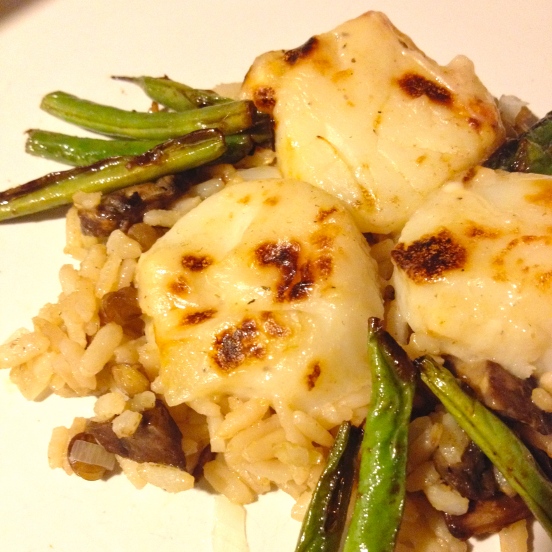Croissants, like any bread, take a while to make, but I was surprised to learn that the actual work croissants require is minimal. They (thankfully) require no kneading — just rolling with a rolling-pin multiple times.
Due to the structure of waiting time, its good to begin the process the night before a day when you will be around the house, or the morning before you work. The first waiting time is longest and doesn’t involve you, the baker, at all. After it is mixed, the dough needs to rest for 6 – 8 hours or overnight. The second stage is similarly lengthy but punctuated rolling every 2 – 3 hours, 3 – 4 (or more) times. So, you will need to be home to make croissants, but will be able to concentrate on doing something else for pretty much the entire day.
In the end, you will have about a dozen large croissants, or many small ones. I like to make one pan with half the dough, then form and freeze the rest to have infinite fancy breakfasts.
• 2 cups flour
• 1 packet dry yeast
• 2 T sugar
• 2/3 c (almond) milk
• 1 1/4 tsp salt
• 1 egg
• butter
1. Pour milk into a medium bowl and microwave until 90-100 degrees, or for 2 – 3 minutes.
2. Add sugar and yeast; mix to combine. Add 1/2 cup flour. Mix and allow to sit for 15 minutes, when it should start to bubble.
3. Mix in remaining flour and form into loose ball. Cover with plastic wrap and refrigerate overnight.
[[Optional Step 3.5: At this stage you can prepare the butter by allowing it to reach room temperature then slowly mixing until pliable or by slicing, laying out in a thin layer on plastic wrap, and beating it with a rolling-pin. In either case, you will form it into a medium-sized square and refrigerate to chill again. I did not do these steps as I wasn’t sure how big my dough square would be.]]
4. Remove dough from refrigerator. Roll, trying to maintain a square or rectangular shape.
5. When it is rather thin but not translucent, add cold butter. Slice and line up in continuous square about 2 – 3 inches from each edge.
6. Fold edge flaps over butter to form square. The butter should be tucked and nestled in there so the whole thing looks like a butter galette. Then, fold one edge one-third of the way over. Fold the opposite edge over that edge, so it is a rectangle of dough hugging itself.
7 . Roll gently into rectangle that is slightly smaller than your first rectangle. Fold one end one-third of the way, then fold the opposite end over it to create another hug. Wrap in plastic wrap and refrigerate for 1 – 2 hours.
8. Repeat step 7, rolling dough, folding it over itself, then refrigerating for another hour. Repeat again once or twice, depending on how much time you’ve allotted for this process. It should be folded at least a few times, as more folds will mean more butter layers and therefore more flakiness.
9. Heat oven to 200 degrees (or the lowest possible setting) and roll dough into another rectangle. Make a single line lengthwise. Fold one half in thirds, cover with plastic wrap, and put back in refrigerator.
10. Coat a baking sheet with butter, then flour. Cut dough strip into triangles.
For croissants, roll, starting with the longest side, over itself, leaving the final tip on the bottom. Place on baking sheet straight or curve the ends together to create a crescent shape.
For pain au chocolat, position the triangle with the longest side near you. Put a vertical stripe of chocolate near each side closest to you, essentially making two mini triangles. Fold both sides over into themselves and place on pan seam side down.
11. Turn off oven. Brush croissants with water and put in oven for 1 – 1 1/2 hours. Alternatively, use a proofing box, set or otherwise regulated to maintain 70 – 80 degrees.
12. Remove from oven after about an hour. Croissants should be nearly double in size. Preheat oven to 425 degrees. Brush croissants with beaten egg. If you are making pain au chocolat, sprinkle with sugar. Set aside for 15 minutes.
13. Bake for 20 minutes, or more if you prefer them darker. Freeze remaining dough.







